SHIBATA ZESHIN 柴田是真 (1807–1891) INRŌ (MEDICINE CASE) WITH DESIGN OF ANTIQUE MIRRORS 古鏡図蒔絵印籠 Meiji era (1868–1912), circa 1870–1890 With four interlocking cases and cover, of standard lenticular cross-section with straight sides, rounded corners, curved top and base, and integrated cord-runners, the roiro lacquer ground decorated in black maki-e with a continuous ground of ken-katabami mon (heraldic crests of swordblades combined with flowers of wood sorrel, Oxalis corniculata), an antique mirror on each side executed in chadō-nuri takamaki-e, one of the mirrors eight-lobed with a dragon design, its carrying cord in red lacquer extending to the other side and terminating in a tassel, the other nine-lobed with a design of two phoenixes alternating with paulownia crests, the compartments and risers gold nashiji, the shoulders and rims brightish gold fundame; the ojime of carnelian; lacquered wood manjū netsuke decorated in gold, silver, and red hiramaki-e with two phoenixes; signed in subori to the left of the handle of the smaller mirror Zeshin 是真 Inrō: 7.6cm × 4.8cm × 1.6cm (3in × 1⅞in × ⅝in) Netsuke: 3.5cm × 2cm (1⅜in × ¾in) With fitted wood storage box (2) Provenance: Sold in these Rooms, 10 November 2015, lot 6 Exhibited and Published: Nezu Bijutsukan (Nezu Museum) 2012, cat. no. 94 Fußnoten In 1875, Zeshin paid a visit to Nara where he was able to examine items stored in the Shōsōin, the eighth-century Imperial treasure house in the precincts of the Tōdaiji Temple (Earle and Gōke 1996, p. 46, quoting Umezawa Ryūshin's 1927 biography of Zeshin). Objects from the Shōsōin, until then almost inaccessible to anyone outside the Imperial court, subsequently played an increasing influential role in Japanese art from early in the Meiji era. Zeshin was no exception to this trend and it is likely that the mirrors depicted on this inrō were loosely modelled on originals stored in the Shōsōin, either Chinese Tang-dynasty examples or Japanese copies of around the same date. He lavished typically meticulous craftsmanship both on the mirrors and on the dense background pattern of mon (crests). Takao Yō notes that although chadō-nuri, used here for the mirrors, is listed as a separate technique in Sawaguchi Goichi's monumental study of Japanese lacquer, Nihon shikkō no kenkyū (1933), in Zeshin's time it would simply have been regarded as a variant of seidō-nuri. Chadō-nuri differs from seidō-nuri in that it contains bengara (red iron oxide) in addition to orpiment (arsenic sulphide), producing an effect that, as Takao comments, is ideally suited to imitating the surface of antique bronze (Takao 2011, figs. 14, 15).
SHIBATA ZESHIN 柴田是真 (1807–1891) INRŌ (MEDICINE CASE) WITH DESIGN OF ANTIQUE MIRRORS 古鏡図蒔絵印籠 Meiji era (1868–1912), circa 1870–1890 With four interlocking cases and cover, of standard lenticular cross-section with straight sides, rounded corners, curved top and base, and integrated cord-runners, the roiro lacquer ground decorated in black maki-e with a continuous ground of ken-katabami mon (heraldic crests of swordblades combined with flowers of wood sorrel, Oxalis corniculata), an antique mirror on each side executed in chadō-nuri takamaki-e, one of the mirrors eight-lobed with a dragon design, its carrying cord in red lacquer extending to the other side and terminating in a tassel, the other nine-lobed with a design of two phoenixes alternating with paulownia crests, the compartments and risers gold nashiji, the shoulders and rims brightish gold fundame; the ojime of carnelian; lacquered wood manjū netsuke decorated in gold, silver, and red hiramaki-e with two phoenixes; signed in subori to the left of the handle of the smaller mirror Zeshin 是真 Inrō: 7.6cm × 4.8cm × 1.6cm (3in × 1⅞in × ⅝in) Netsuke: 3.5cm × 2cm (1⅜in × ¾in) With fitted wood storage box (2) Provenance: Sold in these Rooms, 10 November 2015, lot 6 Exhibited and Published: Nezu Bijutsukan (Nezu Museum) 2012, cat. no. 94 Fußnoten In 1875, Zeshin paid a visit to Nara where he was able to examine items stored in the Shōsōin, the eighth-century Imperial treasure house in the precincts of the Tōdaiji Temple (Earle and Gōke 1996, p. 46, quoting Umezawa Ryūshin's 1927 biography of Zeshin). Objects from the Shōsōin, until then almost inaccessible to anyone outside the Imperial court, subsequently played an increasing influential role in Japanese art from early in the Meiji era. Zeshin was no exception to this trend and it is likely that the mirrors depicted on this inrō were loosely modelled on originals stored in the Shōsōin, either Chinese Tang-dynasty examples or Japanese copies of around the same date. He lavished typically meticulous craftsmanship both on the mirrors and on the dense background pattern of mon (crests). Takao Yō notes that although chadō-nuri, used here for the mirrors, is listed as a separate technique in Sawaguchi Goichi's monumental study of Japanese lacquer, Nihon shikkō no kenkyū (1933), in Zeshin's time it would simply have been regarded as a variant of seidō-nuri. Chadō-nuri differs from seidō-nuri in that it contains bengara (red iron oxide) in addition to orpiment (arsenic sulphide), producing an effect that, as Takao comments, is ideally suited to imitating the surface of antique bronze (Takao 2011, figs. 14, 15).
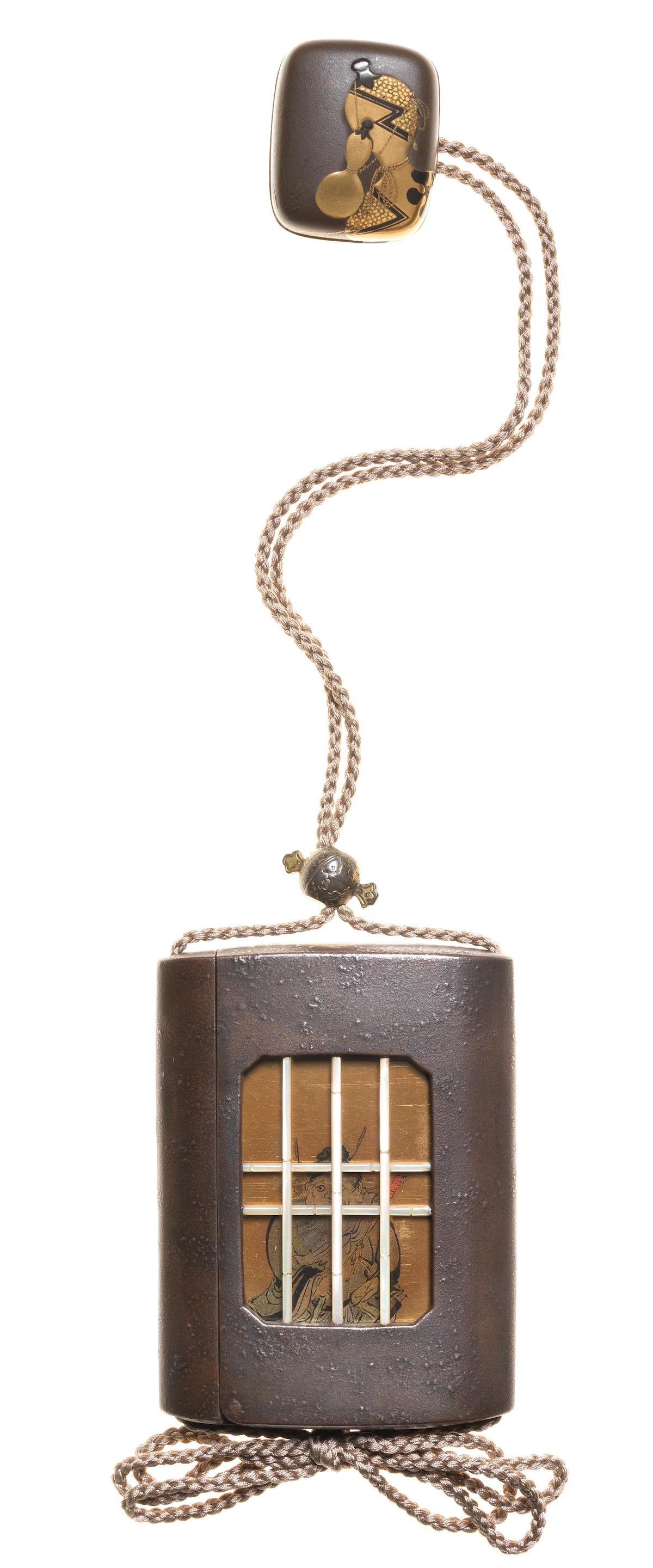
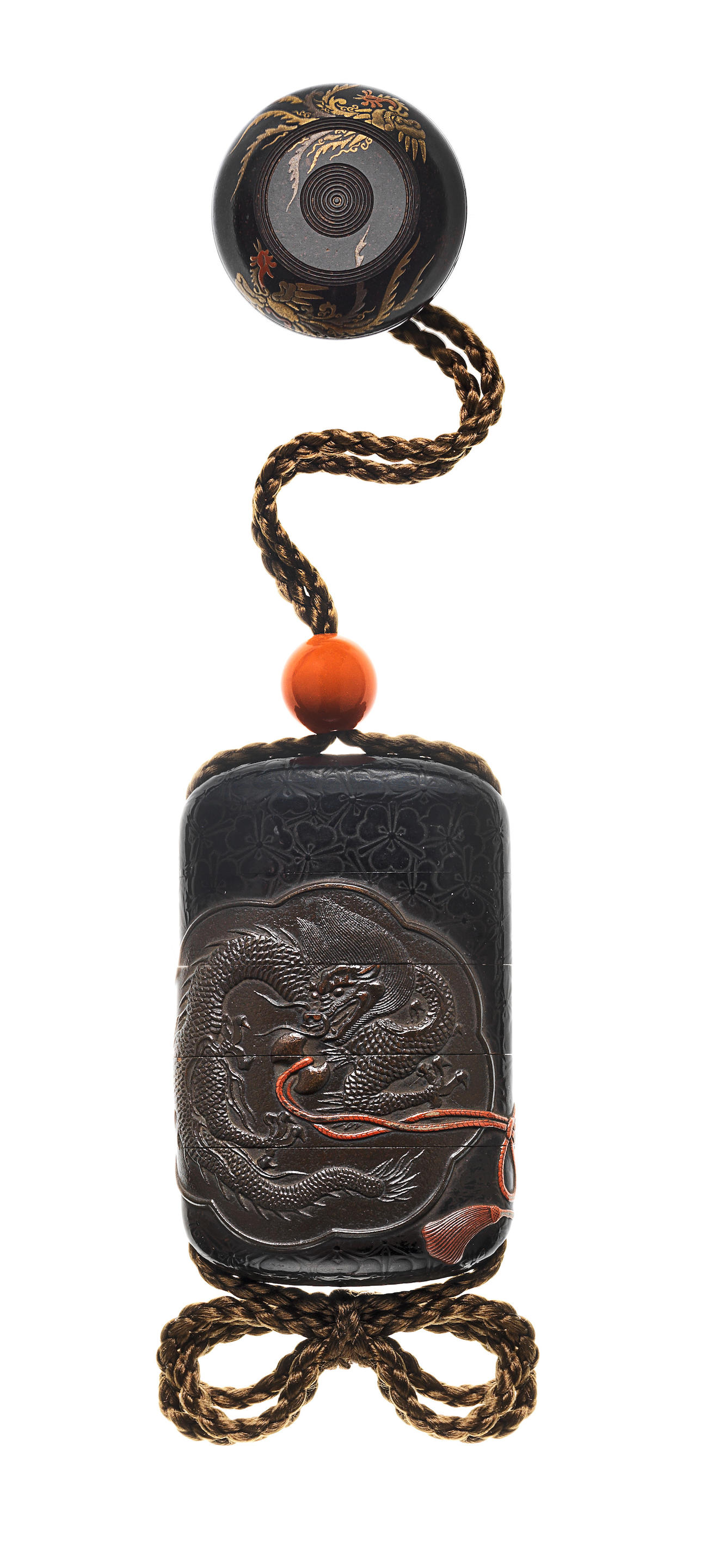
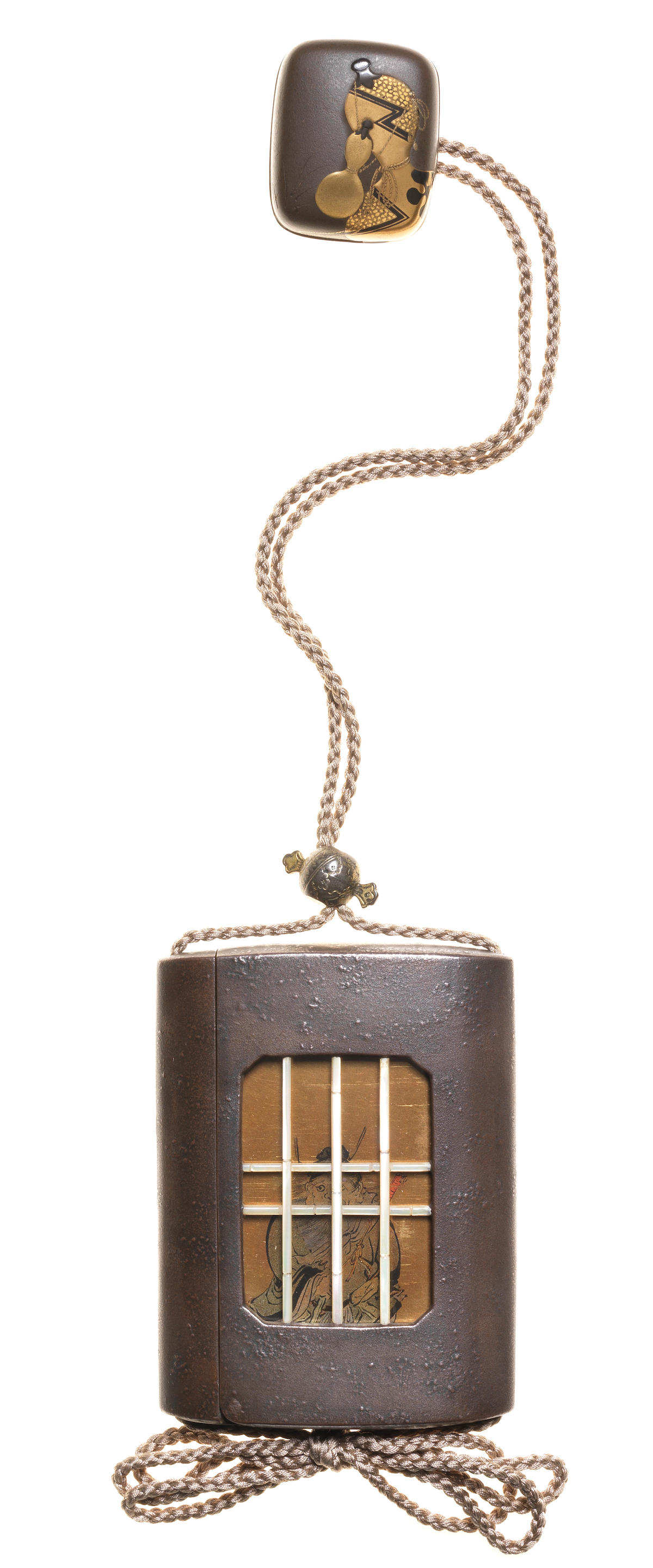
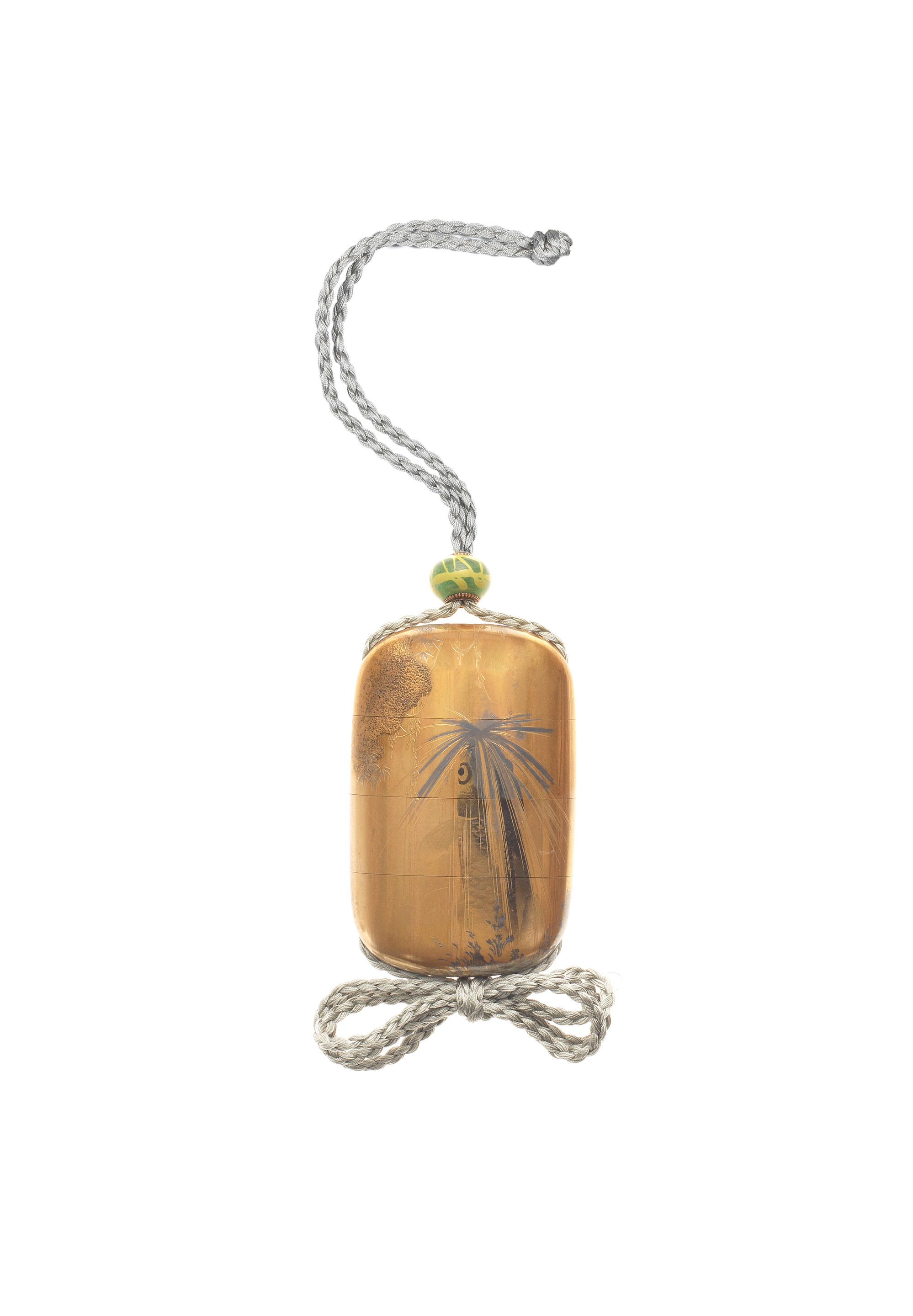

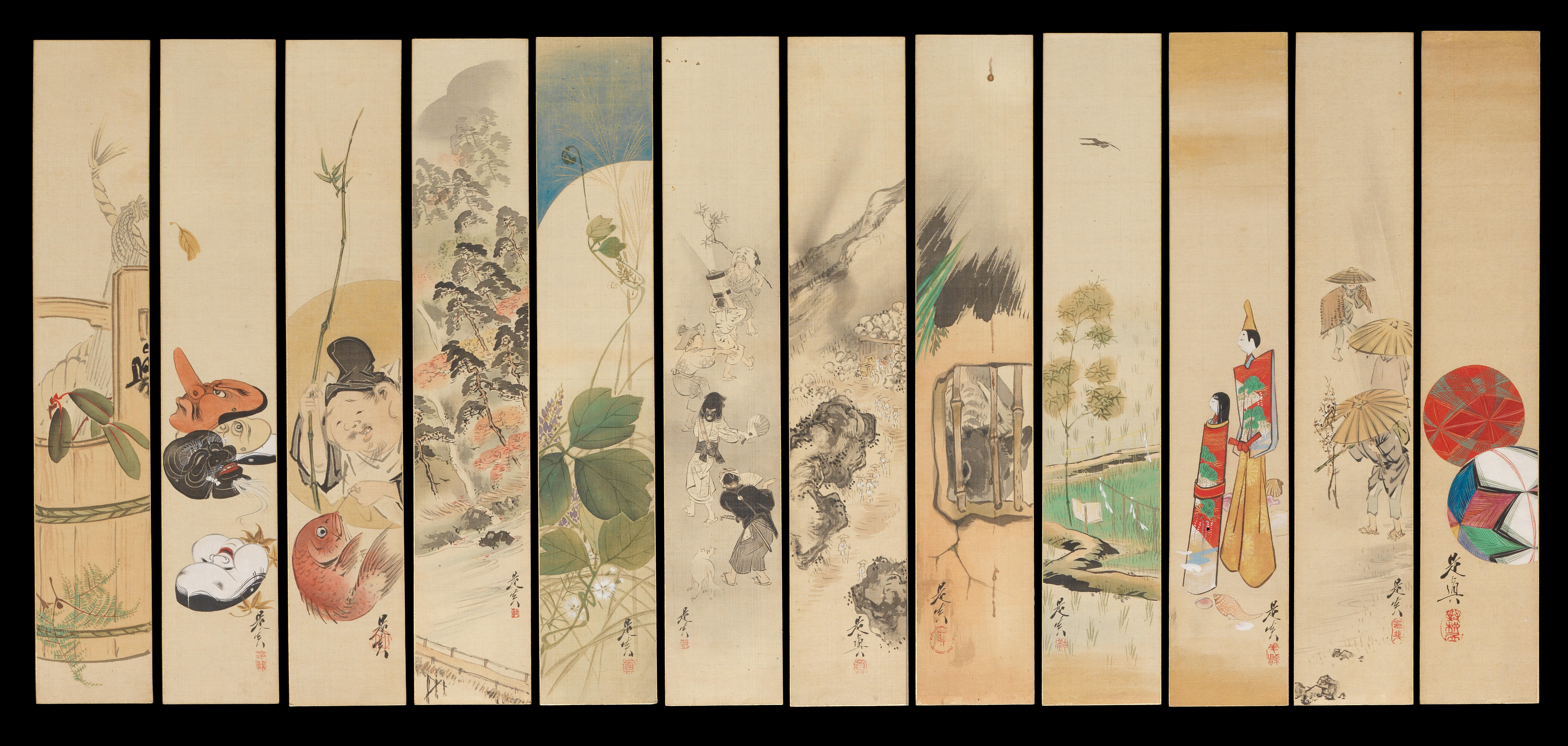
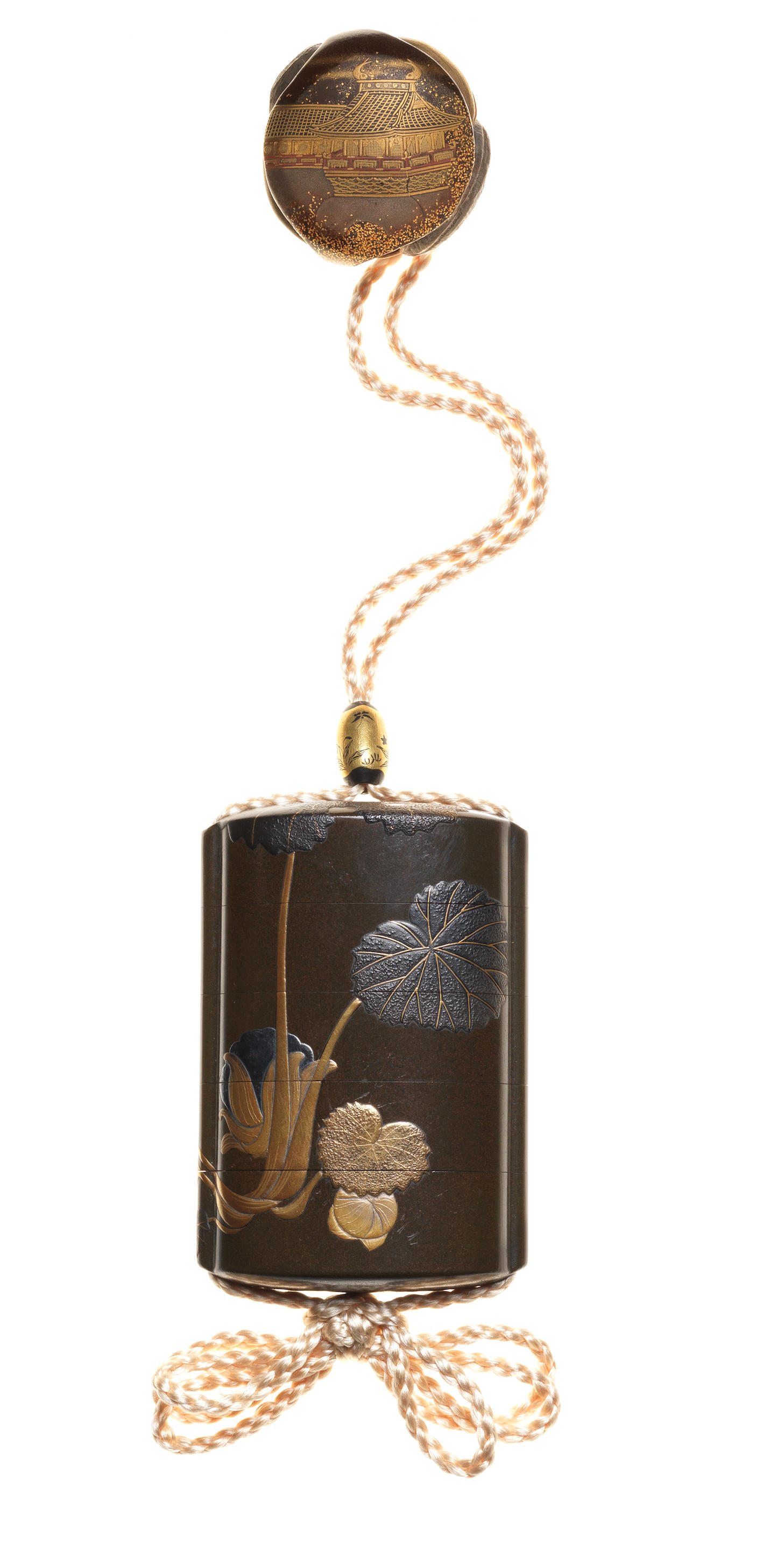


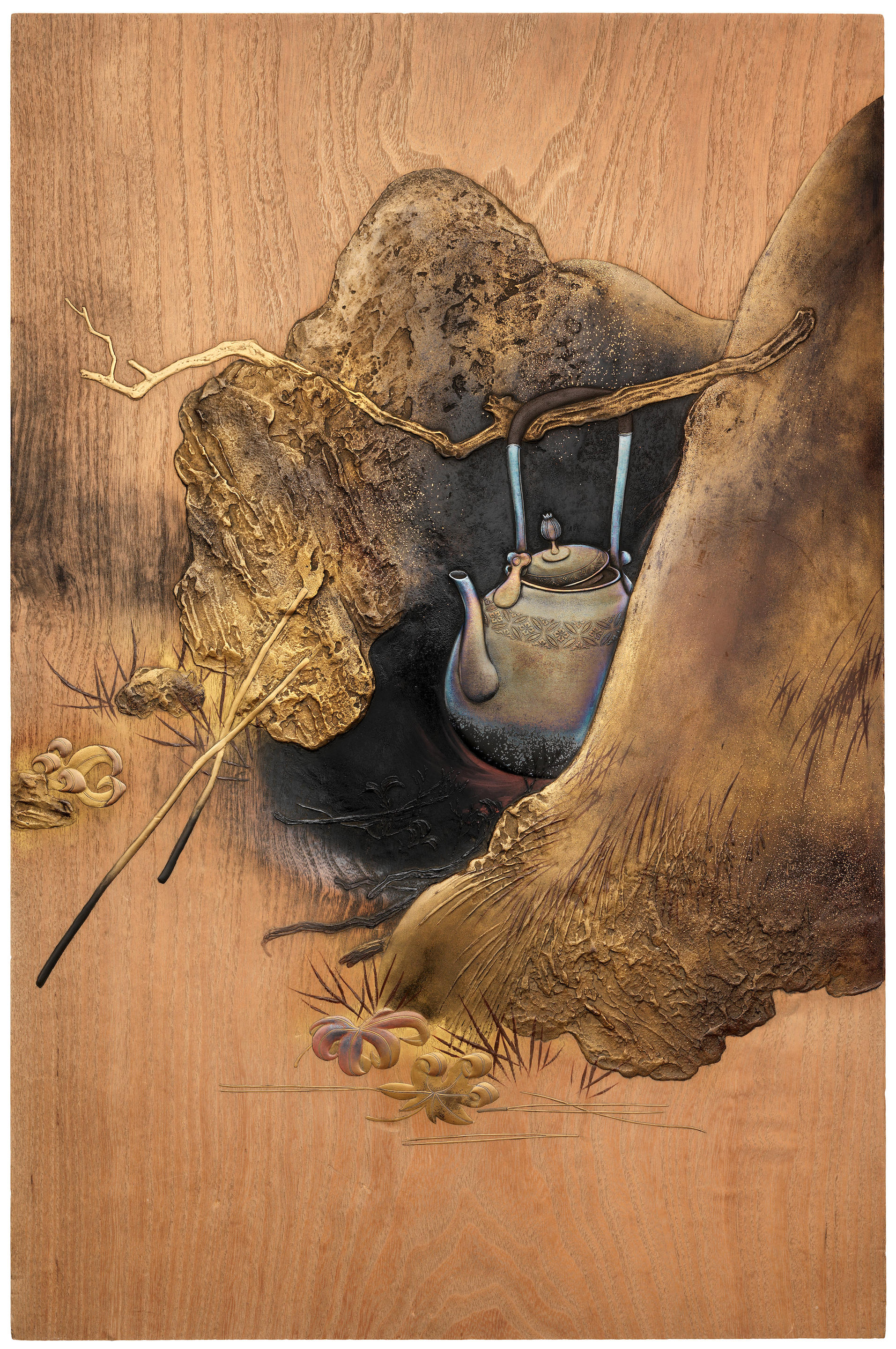




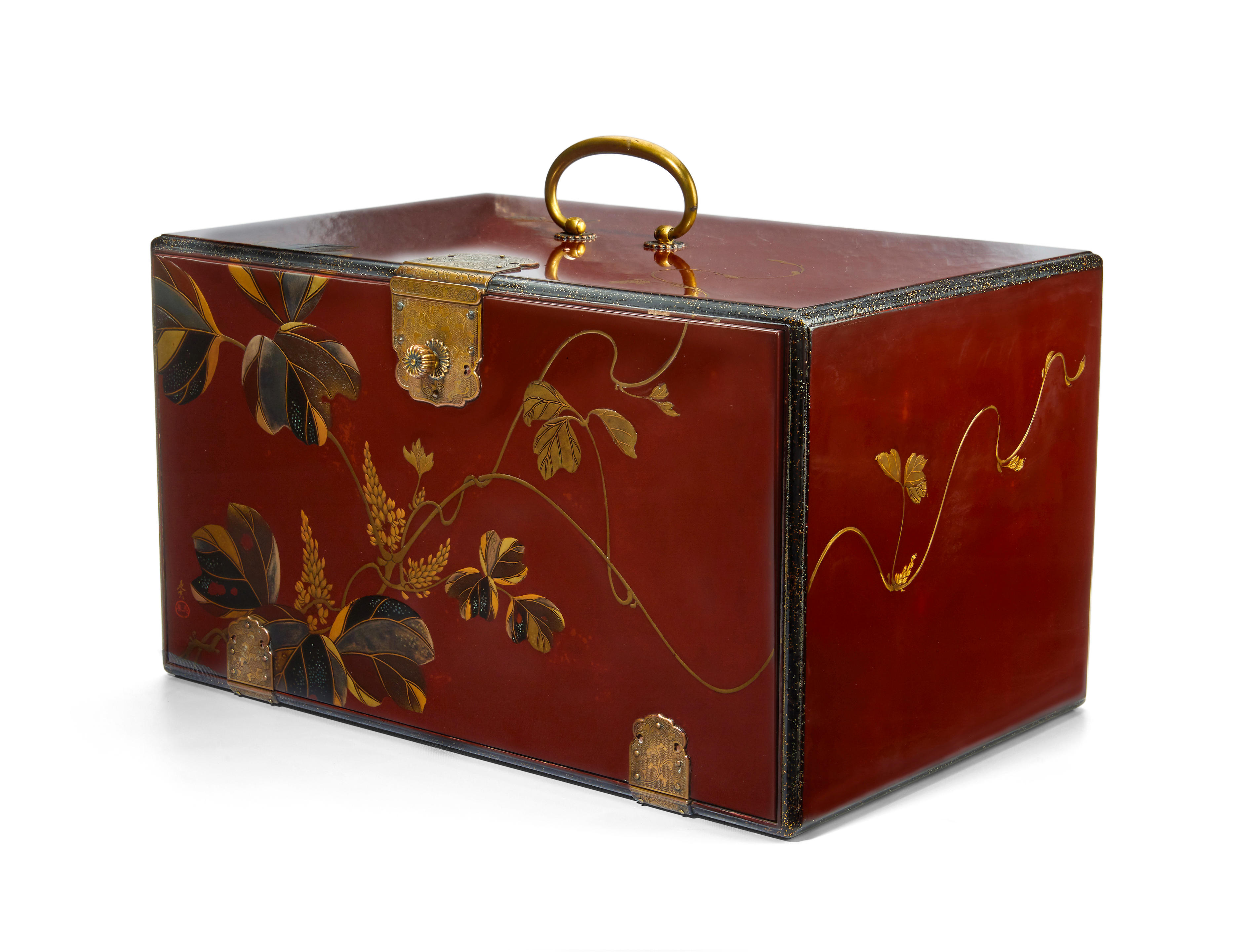
Try LotSearch and its premium features for 7 days - without any costs!
Be notified automatically about new items in upcoming auctions.
Create an alert